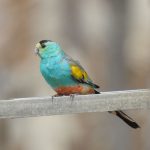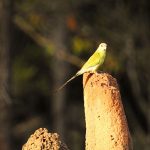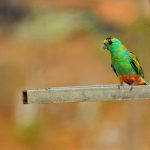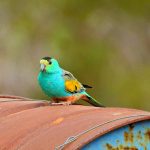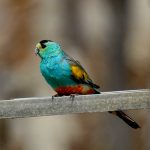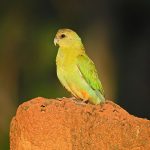GOLDEN-SHOULDERED PARROT
The Golden-shouldered Parrot is endemic to northern Australia, specifically found in parts of Cape York Peninsula in Queensland. They inhabit savannah woodlands and grassy plains in this region.
Adult males have a striking and unique plumage. They have bright yellow-green bodies, with golden-yellow shoulders and upper wings. They also have a blue band across the forehead, a black band on the lower back, and a red patch on the belly. Adult females and immature birds have more subdued colours, with a combination of green, yellow, and brown tones.
These parrots primarily feed on seeds of grasses and herbs, as well as native grass seeds. They also consume various fruits, flowers, and insect larvae. The availability of food resources influences their movements and habitat selection.
Golden-shouldered Parrots typically breed during the dry season, which spans from May to October. They are cavity nesters and often use termite mounds as nesting sites. The female lays a clutch of 3 to 5 eggs, which are incubated by both parents for around 20 to 21 days. After hatching, the chicks remain in the nest for about 5 to 6 weeks before fledging.
The Golden-shouldered Parrot is listed as endangered by the Australian Government. It faces significant threats due to habitat loss and degradation caused by changes in land management practices, such as altered fire regimes and grazing pressure. Predation by feral animals, particularly foxes and cats, is also a significant threat to their populations.
Various conservation programs are underway to protect and conserve the Golden-shouldered Parrot. These efforts focus on habitat management, such as fire management practices that create suitable nesting conditions and control invasive plants. Captive breeding and reintroduction programs have also been initiated to bolster population numbers and promote genetic diversity.
The Golden-shouldered Parrot is a unique and visually striking bird species, but it faces significant conservation challenges. Ongoing conservation efforts aim to ensure the survival of this beautiful parrot and preserve its natural habitat in northern Australia.

